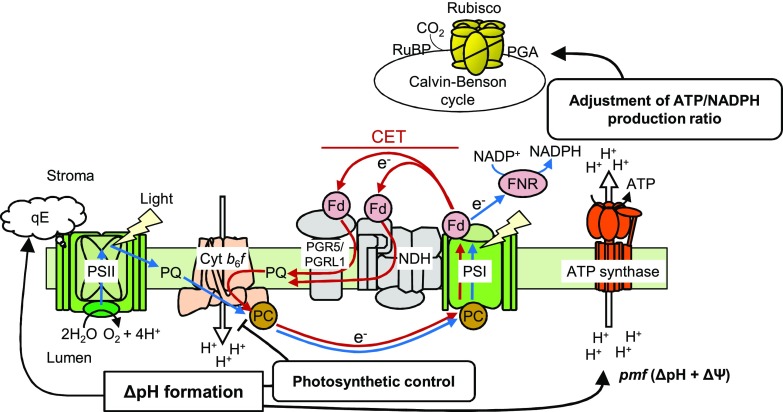Figure 1.
Proposed mechanisms for the regulation of photosynthetic electron transport under high light by PGR5/PGRL1-dependent CET. LET and CET are indicated by blue and red arrows, respectively. In angiosperms, CET consists of two pathways: the PGR5/PGRL1- and NDH-dependent pathways. In response to a sudden increase in light intensity, PGR5/PGRL1-dependent CET backflows electrons from PSI to the PQ pool without net NADPH production and generates ΔpH across the thylakoid membrane via the Q cycle in the Cyt b6f complex. In the PSI acceptor-side regulation, pmf composed of ΔpH and ΔΨ drives ATP synthesis via ATP synthase and adjusts the ATP/NADPH production ratio, which is required for operating the Calvin-Benson cycle and photorespiration. This mechanism alleviates the PSI acceptor-side limitation of electron transport by increasing electron sink capacity downstream of PSI. In the PSI donor-side regulation, luminal acidification slows plastoquinol oxidation at the Cyt b6f complex to prevent excess electron flow toward PSI. This mechanism is called photosynthetic control. In addition, the luminal acidification induces qE quenching in the PSII antenna to discard excess photon energy as heat. FNR, Fd:NADP+ oxidoreductase; PC, plastocyanin; PGA, 3-phosphoglycerate; RuBP, ribulose 1,5-bisphosphate.

